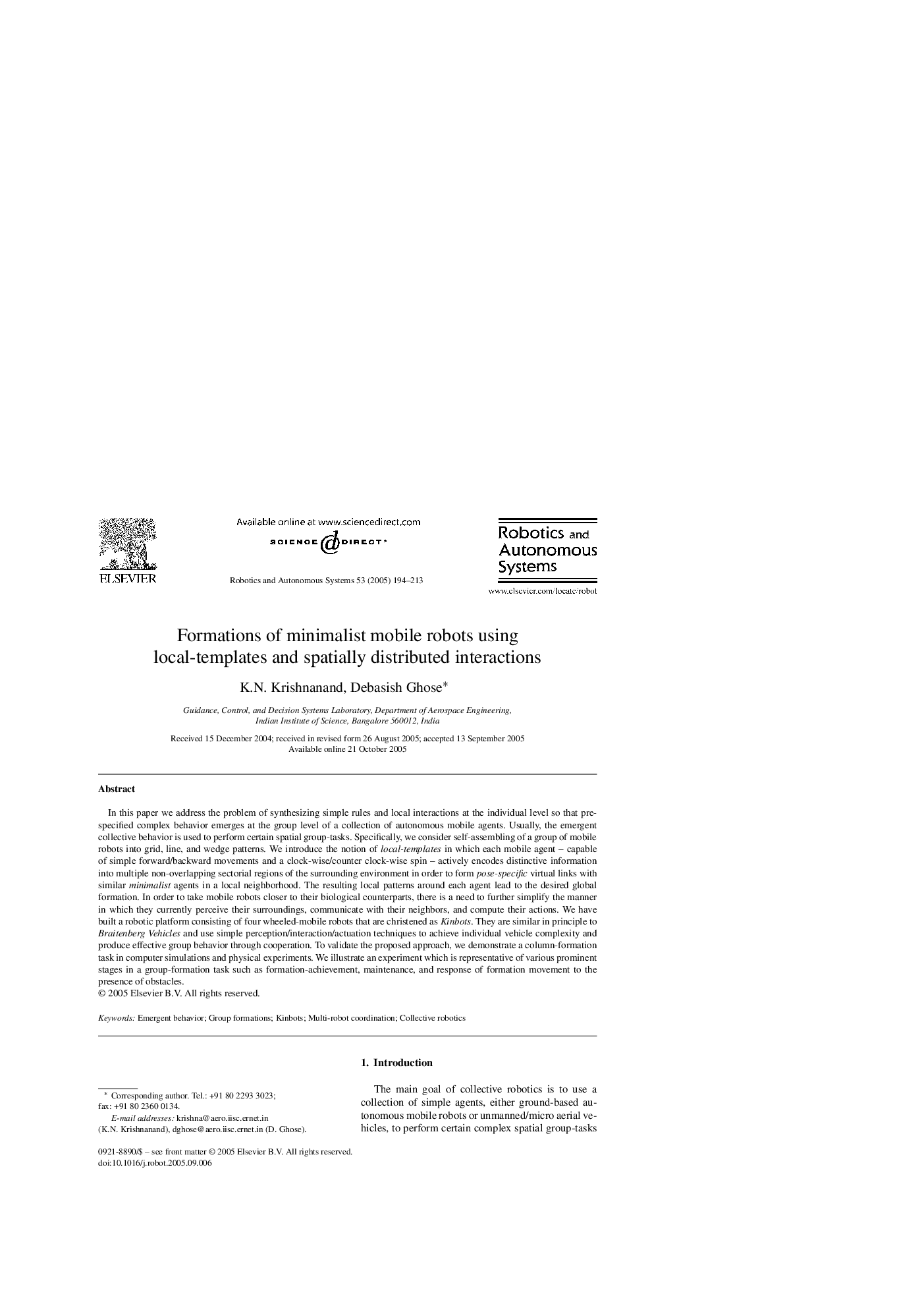| Article ID | Journal | Published Year | Pages | File Type |
|---|---|---|---|---|
| 9654528 | Robotics and Autonomous Systems | 2005 | 20 Pages |
Abstract
In this paper we address the problem of synthesizing simple rules and local interactions at the individual level so that pre-specified complex behavior emerges at the group level of a collection of autonomous mobile agents. Usually, the emergent collective behavior is used to perform certain spatial group-tasks. Specifically, we consider self-assembling of a group of mobile robots into grid, line, and wedge patterns. We introduce the notion of local-templates in which each mobile agent - capable of simple forward/backward movements and a clock-wise/counter clock-wise spin - actively encodes distinctive information into multiple non-overlapping sectorial regions of the surrounding environment in order to form pose-specific virtual links with similar minimalist agents in a local neighborhood. The resulting local patterns around each agent lead to the desired global formation. In order to take mobile robots closer to their biological counterparts, there is a need to further simplify the manner in which they currently perceive their surroundings, communicate with their neighbors, and compute their actions. We have built a robotic platform consisting of four wheeled-mobile robots that are christened as Kinbots. They are similar in principle to Braitenberg Vehicles and use simple perception/interaction/actuation techniques to achieve individual vehicle complexity and produce effective group behavior through cooperation. To validate the proposed approach, we demonstrate a column-formation task in computer simulations and physical experiments. We illustrate an experiment which is representative of various prominent stages in a group-formation task such as formation-achievement, maintenance, and response of formation movement to the presence of obstacles.
Related Topics
Physical Sciences and Engineering
Computer Science
Artificial Intelligence
Authors
K.N. Krishnanand, Debasish Ghose,
